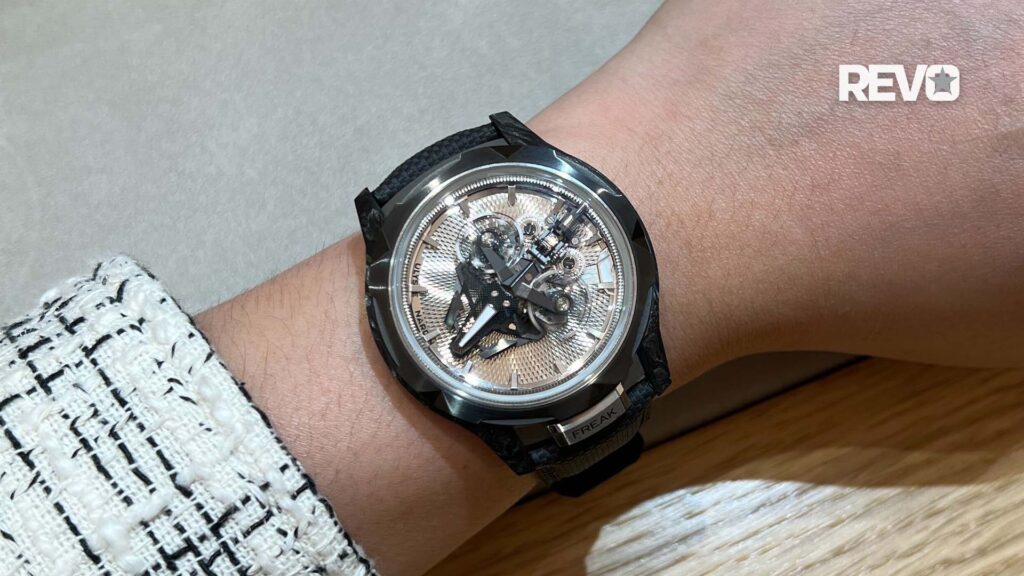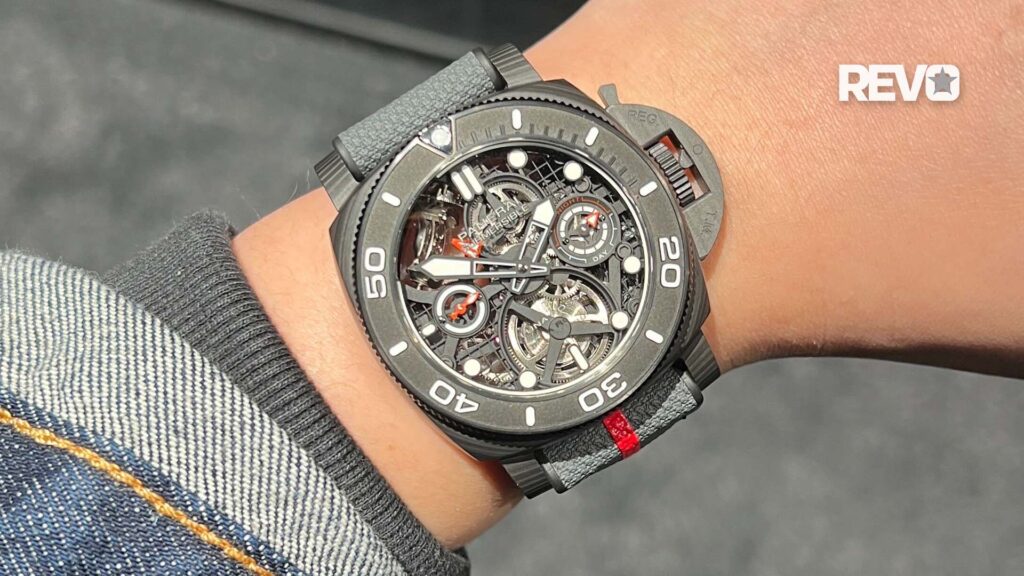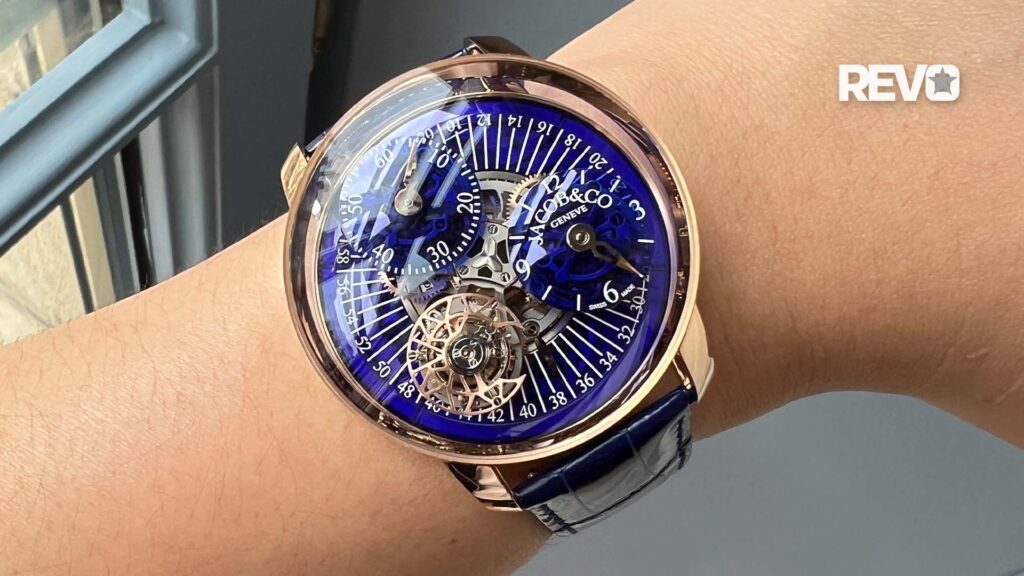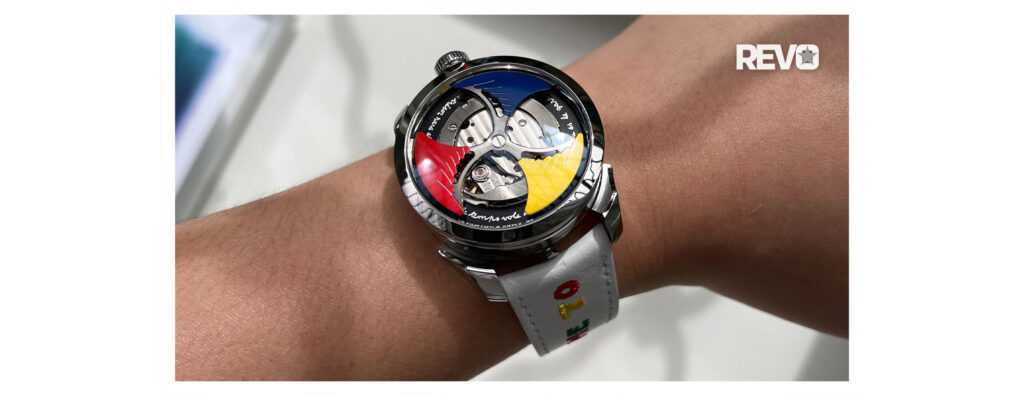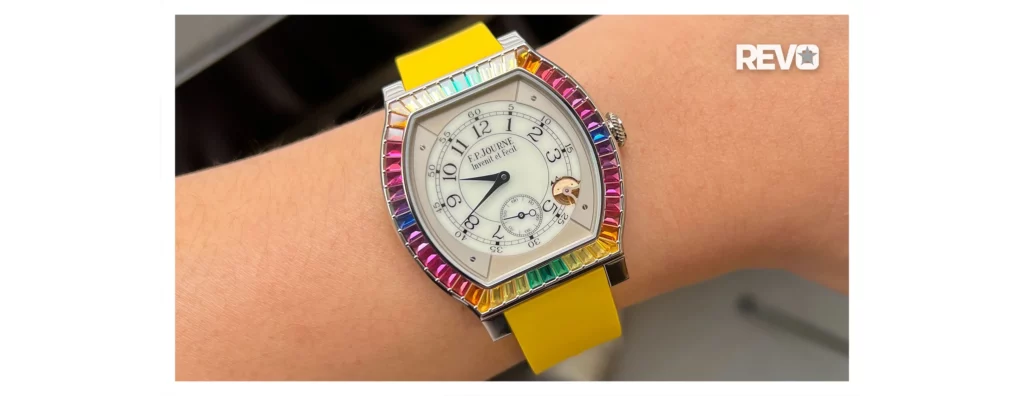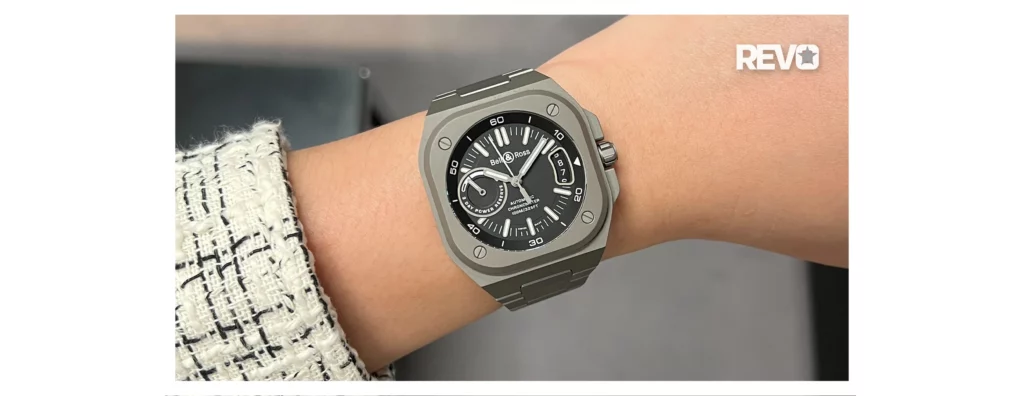Bovet
What Makes a Grand Complication Grand?
Complications
In the real world, complications are a bad thing.
In the watch world, complications are sought after and add value to a timepiece.
Strictly speaking, a complication is a mechanism that adds a function, in addition to the indication of the time. There is a bit of confusion about complications and how they are combined. For example, we all know the term “grand complication,” but no one is actually able to give a definitive definition of what a grand complication really is.
I decided to go to the source, asking true watchmakers what makes a grand complication and what the perfect set of complications is. Here’s what they had to say.
Stephen Forsey, Co‑Founder, Greubel Forsey
We, at Greubel Forsey, invest a lot of energy thinking about the notion of perfection, as it’s something we always strive towards. What we have to keep in mind is that perfection can be a very personal term, as the creator or inventor of a movement will have something particular in mind when combining complications, and that subjective understanding of perfection is, to some extent, a contributing factor in the creation of each timepiece.
Traditionally, a grand complication will contain a variation of several timing, astronomical and striking complications, and it may be labeled “grand” by virtue of being notoriously difficult to develop, or by virtue of its historical background.
In general, I think it’s always very exciting to see an entirely new type of mechanism. If a watchmaker is able to either invent a new complication or completely reinvent a classic complication, then I believe he or she is entering “grand complication” territory.
Each combination of complications presents us with a new set of unique and exciting challenges to overcome. At Greubel Forsey, these would be maximizing the available space, redefining the functions for improved comfort for the collector, performance and reliability, all while taking into account that the creation or design ought to be engaging.
Our main motivation to keep pushing the envelope is the unknown variable “X.” Each of the 20 calibers that we’ve developed over the last 12 years seeks to resolve a particular equation, whether it be strictly mathematical or otherwise. So. we’re not combining complications just for the sake it, but rather, we’re seeking to resolve an equation, and then the perfect combination of complications can emerge. Since there’re still so many unsolved equations left in watchmaking, I think we’re in for some real treats in the years to come.
From the very beginning, Robert Greubel and I were convinced that there was still plenty of room for creativity in watchmaking. Of course, this is the hardest path to follow, rejecting convention and pushing back the boundaries. Yet over the last 12 years, we have developed seven fundamental inventions, among them the Double Tourbillon 30°, the Quadruple Tourbillon and the Mechanical Computer. These are just a few examples of complications that hadn’t existed until very recently.
We always seek to surprise and delight collectors and enthusiasts by reinventing existing complications and yet almost “sublimating” those complications, so that they are as simple and interactive as possible for the collector. It is very difficult to make a complication simple!
Antoine Preziuso, Founder, ANTOINE PREZIUSO GENÈVE
I think the biggest complication is the measure of time itself. And it is hard to define what a perfect combination of complications is.
A grand complication is the supreme test of a watchmaker’s expertise and skill. For each complication, many lifetimes of artistry and skill are employed to produce an object of timeless worth. When I hear “grand complication,” I think of a tourbillon, a striking mechanism, a perpetual calendar, a chronograph and substantial power reserve.
The challenge when combining complications is in ensuring the accuracy of the watch when measuring time, and incorporating the power reserve.
Complications are hard to understand, complex and hard to realize—which explains the difficulty watchmakers face in developing them. The perpetual calendar and the minute repeater are complications that are very difficult to develop.
There is no limit to creativity, however. For me, the complication of the future is an autonomous mechanical watch—one that is truly “perpetual” and does not need to be wound.
Sometimes, it can take a watchmaker over 10 years to achieve a single complication; that’s why it’s called a “complication!”
Guido Terreni, Managing Director, Bulgari watches
Combining complications is a very difficult exercise, in my opinion. It all depends on the execution. Often, in the industry, you see complications that are born for the pleasure of the constructor rather than the owner; which are mainly a show-off of technical skills that, most of the time, are understood only by the developer but rarely have a balance or generate an emotion.
In Bulgari’s quest for pleasing connoisseurs and collectors, we try to be understood. That is why we are very pure in the search for complications—like in our Octo Finissimo collection, where we combine pure grand complications, such as the tourbillon or the minute repeater alone, with the extreme formal elegance of an ultra-thin case.
In horology, it is convention to call grand complications in order of their value: the perpetual calendar, the tourbillon, the minute repeater and ultimately, the grande sonneries that are only within the reach of a handful of brands in the world.
I would say that the major difficulty is, paradoxically, keeping it simple, understandable and ultimately wearable.
You must overcome the dimension constraints that a multi-complication inevitably calls for in height and overall wearability. But most of all it is the balance and readability of displaying the time and the additional functions. The eye of the lucky owner must never get tired of the complexity.
This is very difficult to obtain if the development is led by the movement constructor. The designer of the watch is key in giving the right indications in finding technical solutions that are at the service of the final aesthetic of the watch and finally, at the service of a long-lasting appeal.
As Italians, we are very sensitive to the allure of the complication. I specifically refer to our Octo Finissimo Minute Repeater, where we shocked the industry with a minute repeater that is extremely contemporary, in titanium for aesthetical and technical reasons, with a total weight of only 46 grams to provide the owner with an unprecedented feeling of lightness, a sensation of not having a complication on your wrist; as if it was a second skin. There are emotions that can’t be described; you need to put one on your wrist to understand it, because that’s where it’s meant to be, rather than stored in a safe.
Denis Flageollet, Co-Founder, De Bethune
Historically, horological mechanisms always displayed additional functions to time. The tower clock is the most relevant example—to illustrate their power, political and religious leaders of a city had to build a tower clock that was giving as much information as possible. They were astronomical at the very beginning, to replicate celestial motions. Because of the necessity to punctuate society’s life, they were soon completed with sound animations and automatons to mark daily or annual rites.
Thereafter, burghers and nobles pushed watchmakers to miniaturize, as much as possible, those mechanisms. Ultimately, there is no one perfect combination but a perfect combination for a place, in a given era and for a given use.
A grand complication is, first and foremost, an emotion. Like our emotions, combinations of complications are then almost infinite!
When thinking about complications, their eyes light up since it is always a great challenge to bring life to outstanding mechanisms. But there is, to my point of view, a greater challenge to spreading the magic of such complex mechanisms to the owner of the timepiece without revealing all its secrets.
For me, the most important aspect in the making of a complication is the real purpose of the venture or project. I am not interested in only adding complications. The grand complication that will be then achieved has to be coherent with its essence and expected excellence as a whole.
I think complications should be more interactive. Taken to the extreme, a mechanical timepiece could become a “transformer,” able to modify its appearance as well as the indications.
Watchmakers consider the complications from the inside and the development of complications is a great playground for watchmakers and developers. When thinking about complications, their eyes light up since it is always a great challenge to bring life to outstanding mechanisms. But there is, to my point of view, a greater challenge to spreading the magic of such complex mechanisms to the owner of the timepiece without revealing all its secrets. Our DB25 World Traveller is a good example of this achievement. The most complex developments often look sober but are actually the greater and most difficult challenges.
Jean-Marc Wiederrecht, Co‑Founder, Agenhor
Normally, the designation “grand complication” is only used when the major complications (minute repeater, perpetual calendar, tourbillon and chronograph) can be found in the same watch.
The biggest challenge is that, in a wristwatch, disposable torque for complications is low. And, when you add complications, you add parts! All the parts must find their place in a very small volume.
Mastering the interactions between the different complications not only in normal service, but also when operating corrections either by the crown and/or by the pushers is very difficult.
And there are so many possibilities when combining complications. Some small complications are very easy to add on normal movements, but when it comes to adding complications on chronographs or perpetual calendars, for instance, it really becomes harder!
I think and hope that the complications of the future will be pure in function and design and, above all, that they’ll be made in the highest quality and by men rather than robots.
In the last 20 years, new ways of displaying time have been increasingly developed and used. The new advancement is that complications are now fully integrated into specific movements—the components of the complications are no longer added on top of a conventional movement, but directly built into the movement, allowing us to make thinner mechanisms with much higher quality.
For me, the watch I’m working on contains a completely rebuilt complicated movement, allowing a super clean and pure design as well as amazing legibility.
Pascal Raffy, Owner, Bovet
According to the values of our maison, the perfect combination of complications is one that brings together functions and indications that are coherent, complementary and useful. Thus, a moonphase makes sense when it is combined with a perpetual calendar or a watch with multiple timezones. It would not be very logical to simply pair it with a minute repeater ora chronograph, for instance.
As far as we are concerned, we call our timepieces “grand complications” if they are at least powered by a tourbillon or there is a minute-repeater function.
Sometimes, the difficulty lies somewhere you would not necessarily expect—synchronizing the jump of a jumping hour with the jump of a retrograde minute, for example, requires perfect design, assembly and setting. When it comes to combining several complications, we believe that their hierarchy is particularly crucial: you will obtain a better result for a given complication if you position it in the correct place in the kinetic chain.
First of all, there really are some passionate collectors out there for whom such complications represent the quintessence of the watchmaking art. In this sense, fine watchmaking is duty-bound to express its excellence and it is even fundamental to perpetuate the watchmaking arts and take them to the peak of perfection, whether in terms of decorative arts or technical watchmaking skills.
Our latest timepieces aim to answer both sides of the question as well as possible. Thus, the Bovet Amadeo Fleurier Grande Complications Braveheart is a true example of traditional artisanal watchmaking. To enhance this aspect while perfecting its timekeeping, six patents were filed for this timepiece. Among them, the spherical differential enables us to halve the number of turns of the crown needed to fully wind the timepiece and provide its 22 days of chronometric power reserve.
We all have to remember that a watch movement is a complex miniature mechanical motor. It is in constant operation and only requires maintenance once every five years. In a watch movement, you can find some wheels that turn several times per second while others can sometimes take several years to make a single turn.
These are, of course, obvious facts that everyone knows, but they remind us of the magic, enchantment and excitement that fine watchmaking kindles within us and that is a daily surprise, fueling the passion of each and every one of our artisans.
Max Büsser, Founder, MB&F
Mechanical watchmaking is art, and there is no perfect formula for art. Two decades ago a grand complication used to be, for me, mixing at least a minute repeater, tourbillon, perpetual calendar and chronograph. Then the marketing departments of dozens of brands started using that word for all sorts of different movements which had something “complicated,” thus losing much of its meaning.
The more functions or moving parts, the more energy is consumed, and thus needing much stronger barrels to ensure enough amplitude to the regulator.
Size is important, of course, because “wearability” cannot ever be forgotten. I have a very small wrist, and it is crucial that notwithstanding the complication or design of the case, it feels comfortable on my wrist.
At MB&F we see watchmaking as kinetic art. We love deconstructing beautiful traditional watchmaking and reconstructing it into a mechanical sculpture. So yes, there are many “complications” we would love to rework but we are not interested in “stacking” complications per se. Watchmaking should probably not be related to sandwiches.
In our HM4, we needed 311 components to give you hour, minute and power-reserve indicator. In the HM6, we needed 475 components to give you the same, but instead of the power-reserve indicator, there’s a flying tourbillon! Beautiful mechanical watchmaking is an alphabet which allows creators to create all sorts of languages. For us, the complication per se does not have to be the goal anymore, the mechanical sculpture is the goal.
Roger W. Smith, Master Watchmaker
My work revolves around creating watches which will work and deliver an accurate rate of timekeeping over a long duration. And it is for this reason that I am now saying to my clients (Particularly when I am talking about my new range of watches with their more efficient co-axial escapements) that I would expect the watches to have a service interval into the double digits.
Any complication will have a negative effect on the timekeeping qualities of a watch and when designing a watch with a complication in mind, I design the complete mechanism to accept the particular complication, i.e. my complications are not bolt‑on. This is important because I have to ensure that any complication that I design into a mechanism must have minimal impact on the efficiency of the mechanism and satisfy my design philosophy for longevity.
I am neither a complications specialist nor a fan of adding complications for the sake of it.
Christophe Claret, Founder, Christophe Claret Manufacture
I would say that when you combine complications, it must be done consistently, technically and aesthetically. A grand complication includes, for me at least, a minute repeater, combined with a tourbillon as well as a perpetual calendar or a split-seconds chronograph, for example.
The main challenge is to integrate these complications, which is the only way to be optimal technically and qualitatively. In fact, if you add these complications on top of each other (in multilayers) there will inevitably be problems.
The mechanism for the grande sonnerie is one of the most complex complications existing in watchmaking. This is why it is very difficult to combine it with other complications.
The sources for inspiration for the complications we have made come primarily from outside watchmaking. Indeed, I am inspired by nature, poetry, magic, antiques, aerospace, automotive, mechanics and more.




